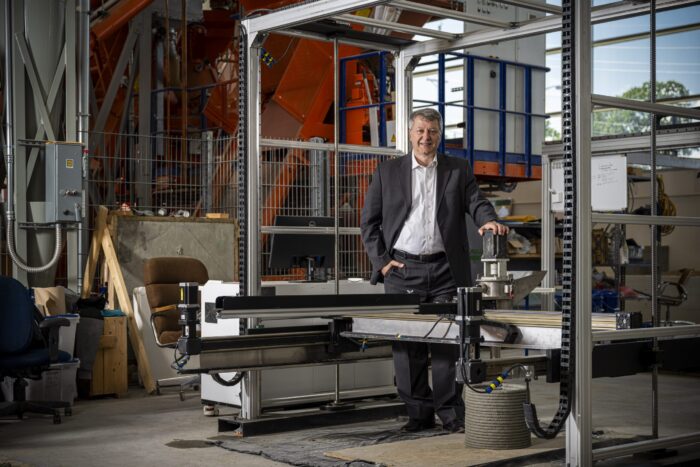S&T awarded $1.4 million from Army Corps to develop AI-based program for 3D printing concrete

ROLLA, Mo. – A Missouri University of Science and Technology research team led by Dr. Kamal Khayat has been awarded $1.4 million from the U.S. Army Corps of Engineers to develop an artificial intelligence program that will determine the best locally-available materials for 3D-printed concrete.
This technology will allow the Army Corps to more quickly 3D print concrete structures without relying on the delivery of large amounts of construction materials.
“By harnessing the power of AI, our research team aims to streamline the process of material selection, ensuring optimal performance and cost-effectiveness,” says Khayat, S&T’s vice chancellor for research and innovation. “The AI program will evaluate a wide range of locally-available materials in various areas and identify the most appropriate combinations for 3D printing concrete.
“This will enhance the efficiency of the construction process, improve troop safety, pave the way for more sustainable practices and help expedite humanitarian assistance missions.”
Khayat also serves as S&T’s Vernon and Maralee Jones Professor of Civil Engineering and was listed as a top researcher in his field in an analysis by Stanford University. For this interdisciplinary project, he is leading researchers with expertise in materials science and engineering, civil engineering, and computer science.
Everything from temporary bridges and barracks to guardhouses and defense obstacles could potentially be created with this program.
The team’s goal is to have 50% or more of the materials be indigenous, or local, to replace traditional cement materials. The materials will be tested to determine how easily they can be pumped, extruded and used for construction.
Potential materials will come from natural minerals, industrial byproducts and agricultural waste, which could include sources such as rice husk ash, palm oil fuel ash, ground dolomite and ground glass. Khayat says that using these materials could also potentially improve local sustainability and provide an economic benefit for the local areas.
Khayat’s team will also consider a variety of fibers to reinforce the 3D-printed structures. Some metal and synthetic structural fibers will be tested, but so will more unconventional fibers derived from plants and recycled materials, such as bamboo, coconut, glass, hemp, cellulose and rubber.
“This will be a comprehensive project that will make a significant difference in the mobility of our troops,” Khayat says. “The amount of supply chain issues for materials will be greatly reduced, as will the construction costs. Missouri S&T is a leading university for researching novel 3D printing of concrete materials, and we are proud to answer the federal government’s call to help with this important work.”
Khayat joined S&T’s faculty in 2011. He has long been considered a pioneer in the field of high-performance concrete with adapted concrete rheology, including self-consolidating concrete. He has won multiple awards for his efforts, including the Robert E. Philleo Award from the Concrete Research Council of the American Concrete Institute Foundation and a lifetime achievement award from the International RILEM Conference on Rheology and Processing of Construction Materials.
About Missouri University of Science and Technology
Missouri University of Science and Technology (Missouri S&T) is a STEM-focused research university of over 7,000 students. Part of the four-campus University of Missouri System and located in Rolla, Missouri, Missouri S&T offers 101 degrees in 40 areas of study and is among the nation’s top 10 universities for return on investment, according to Business Insider. For more information about Missouri S&T, visit www.mst.edu


